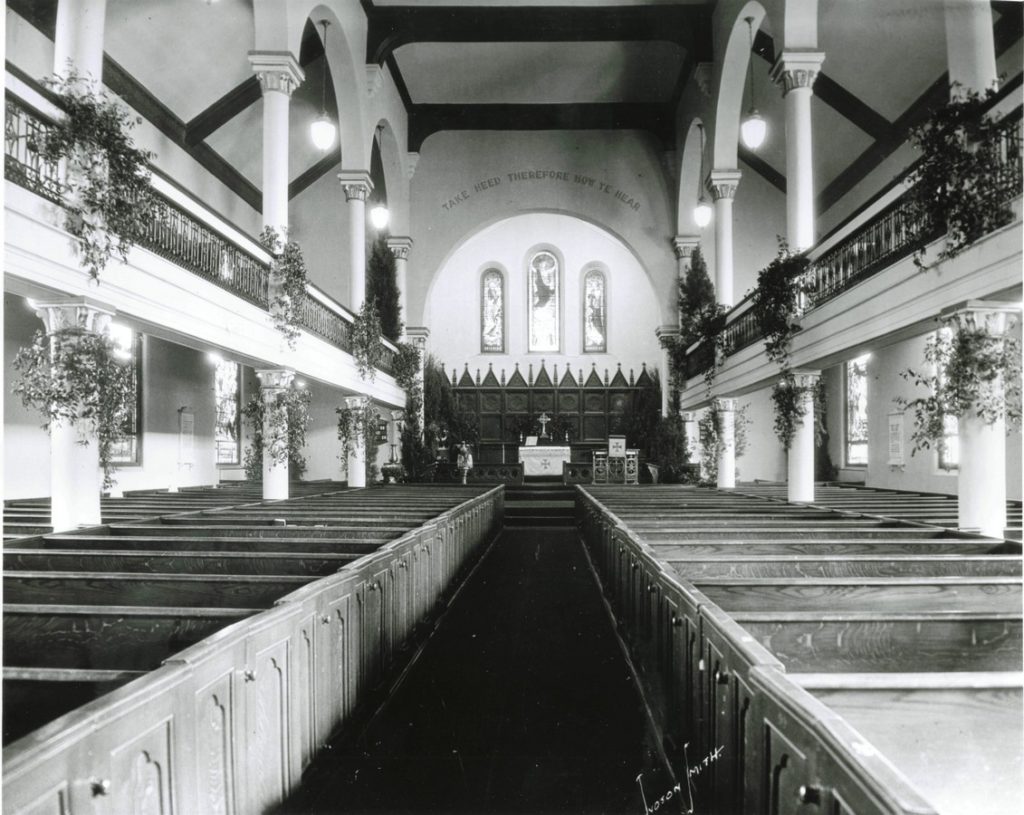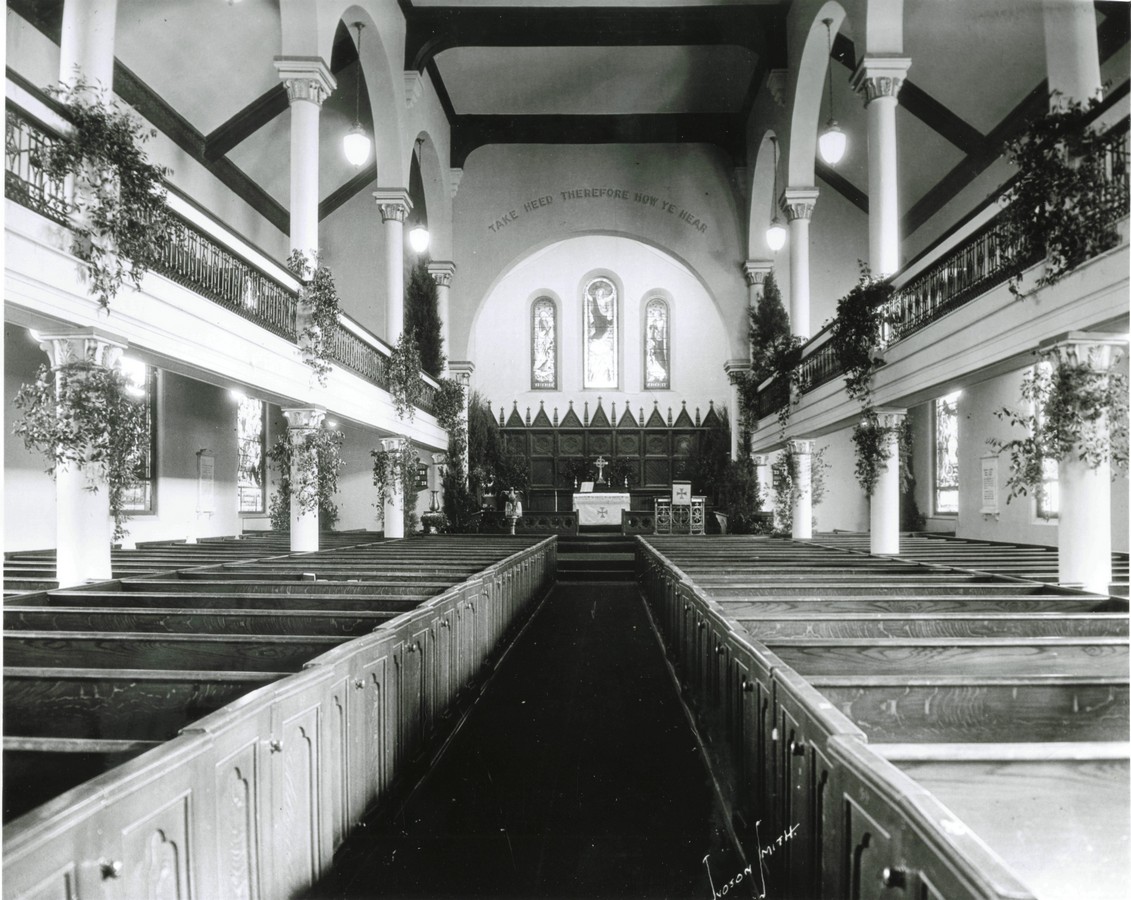
Context counts for everything.
When you hear a participant’s words where history happened—Lee at Appomattox or Lincoln at Gettysburg—events can take on whole new dimensions.
Listeners reflect. A few might grow perturbed. People resolve to read more about what they’ve just learned. Some have been known to cry. Conversation flows.
Organizer hope to create those kinds of connections with participants Saturday when St. George’s Episcopal Church hosts “Voices from the Storm: Fredericksburg” to mark the Battle of Fredericksburg’s 154th anniversary.
Begun in 2005, the National Park Service’s “Voices” programs here have proven popular, drawing hundreds of attendees and prompting local congregations and groups to share their experiences.
“The Voices programs are not talks, but neither are they quite theater,” says John J. Hennessy, chief historian at Fredericksburg and Spotsylvania National Military Park. “They fall someplace in between, using the words of those who were there—wielded by dramatic readers, along with images, narration and even music—to see these events through the eyes not of history, but of people. This is a supremely human story.”
Saturday’s venture—a culminating event in the battle anniversary’s two-day Remembrance Weekend held by the park—will tell of “hardship, fear and fortitude” informed by eyewitnesses’ letters, diaries and memoirs, Hennessy said.
The winter of 1862 brought the most difficult days in Fredericksburg’s history, as civilians struggled in the presence of armies, and soldiers confronted one another in and around the town, he said.
Built in 1849, the church building will figure prominently in helping make manifest the Dec. 13, 1862, battle and its consequences.
The Rev. Joe Hensley, the 27th rector of the parish, said he is delighted that St. George’s will host the Voices event. In August, it welcomed historian Steward Henderson and costume-clad re-enactors for “War Comes to the Church,” a presentation about the role the church played in the battle and its aftermath.
“The clock tower of the church was a target of cannon fire and was a lookout post, although it suffered no damage,” Hensley said. “The Union used the church as a hospital and our basement fellowship hall as an operating room. A few months later, Confederate soldiers gathered in the church for a revival led by the 13th rector of the parish, the Rev. Alfred Randolph.”
A NEW UNDERSTANDING
The young wartime minister will figure in the program, said Hennessy, who found a Union soldier’s journal entry describing how he and his comrades fashioned a Sunday dinner for themselves from the pantry and chicken coop of Randolph’s home on nearby Hanover Street.
“I plan on using almost all new material that speaks to the experience of the town, the conduct of the Union army, the harsh realities of the battlefield, and the aftermath,” Hennessy said.
That will include soldiers’ description of their partying inside the parsonage of St. George’s, at what is today 303 Hanover St., he said.
[Link to the memoir described.]
Fresh and provocative, the program will offer a new understanding of the looting of the town once it was occupied by the Union army, Hennessy said.
“This ‘Voices’ features a great deal of quotes and descriptions we have never used before,” he said. “I am always excited to throw new things out there.”
For instance, 2nd Delaware Regiment surgeon David H. Houston wrote home of the city’s “most melancholy aspect” after roving soldiers emptied its dwellings, shops and public buildings.
“The streets and side-walks in many places are now filled and encumbered with their contents,” Houston wrote. “This is shameful and I feel it to be a reproach to our character and our cause …”
Other research discoveries turned up vivid, firsthand descriptions by Union troops of crossing the Rappahannock River in pontoon boats despite withering fusillades from Confederate sharpshooters near Hawke Street, the first amphibious landing under fire in American military history.
Another soldier wrote of the crossing: “We cared or thought but little of the whistling balls, each man was eager to go over. On reaching the shore, our regiment was ordered to drive the enemy from the houses and take possession.”
FIGHTING IN THE STREETS
During the fierce fighting in the streets—urban warfare—troops went from dwelling to dwelling to roust the Southern riflemen. One of those residences was almost certainly the Wellford family’s house, which survives today.
“We came to a splendid house, the owner of which had locked himself in; we broke through the back door, and were then ordered to cross the street, breaking through the front door,” a soldier wrote, “and as we were about to pass out, there came a shower of balls—it was now ‘a live coward or a dead hero’—we hesitated, when G.F.N., standing by my side, received a ball in his neck, and died without a groan.”
The piano from the Wellford house, which has its own battle story, is on exhibit at Chatham Manor, the park’s headquarters in Stafford.
A RESONANT PLACE
Even the seats in St. George’s have something to say, Hensley said, noting how they were turned into cots for men hurt and maimed in the bloody contest near the Sunken Road at the foot of Marye’s Heights.
“We still sit on the actual pews from that time period, pews which have held both the faithful in worship and soldiers wounded in battle,” he said.
The church is the only Fredericksburg house of worship where the original pews survived the war and remain in use, Hennessy said.
The rector will read from some of his predecessor’s letters for their insight into wartime existence in Fredericksburg.
“The sanctuary of St. George’s … is a particularly resonant place,” Hennessy said. “There, silence and words speak with equal power.”
Saturday’s program will be the seventh in the occasional series, a collaboration between the National Park Service and local organizations to dramatically describe how the Fredericksburg region struggled before, during and after the Civil War and and was transformed by it.
Earlier programs explored the trials and triumphs of local civilians; the experiences of an enslaved man, John Washington; Fredericksburg’s ordeal as a “City of Hospitals;” and the travail suffered by Spotsylvania civilians during the conflict.
The free program begins at 7 p.m. St. George’s is located at 905 Princess Anne St., across from Foode restaurant and two doors down from the Fredericksburg Area Museum and Cultural Center.
The battlefield park’s Remembrance Weekend offers a variety of special events and walking tours on Saturday and Sunday. Details are on the park’s website. Or call 540/693-3200, ext. 4010.
ON THE WEB
Park calendar: Park Service link
St. George’s blog: St. George’s History
